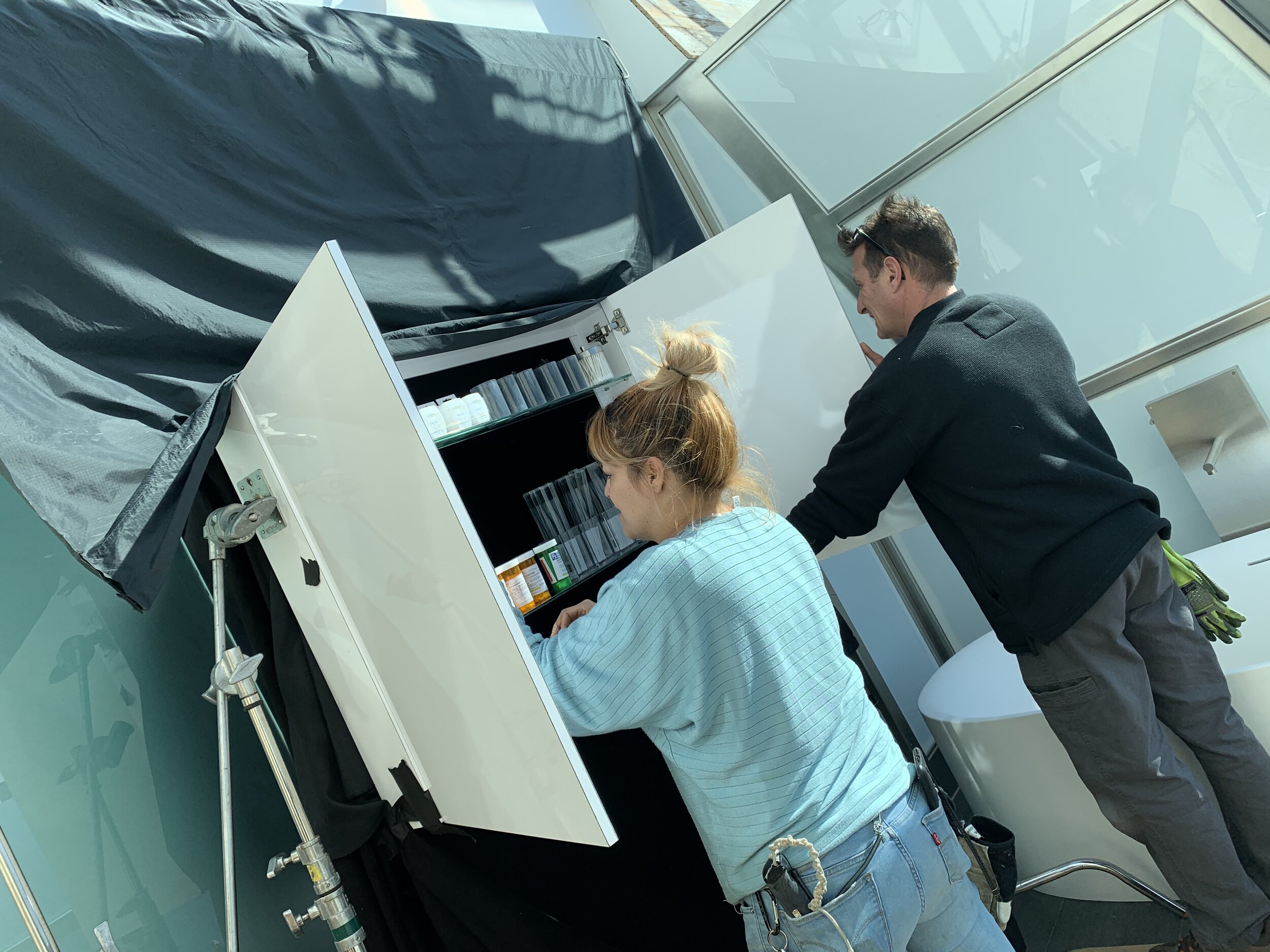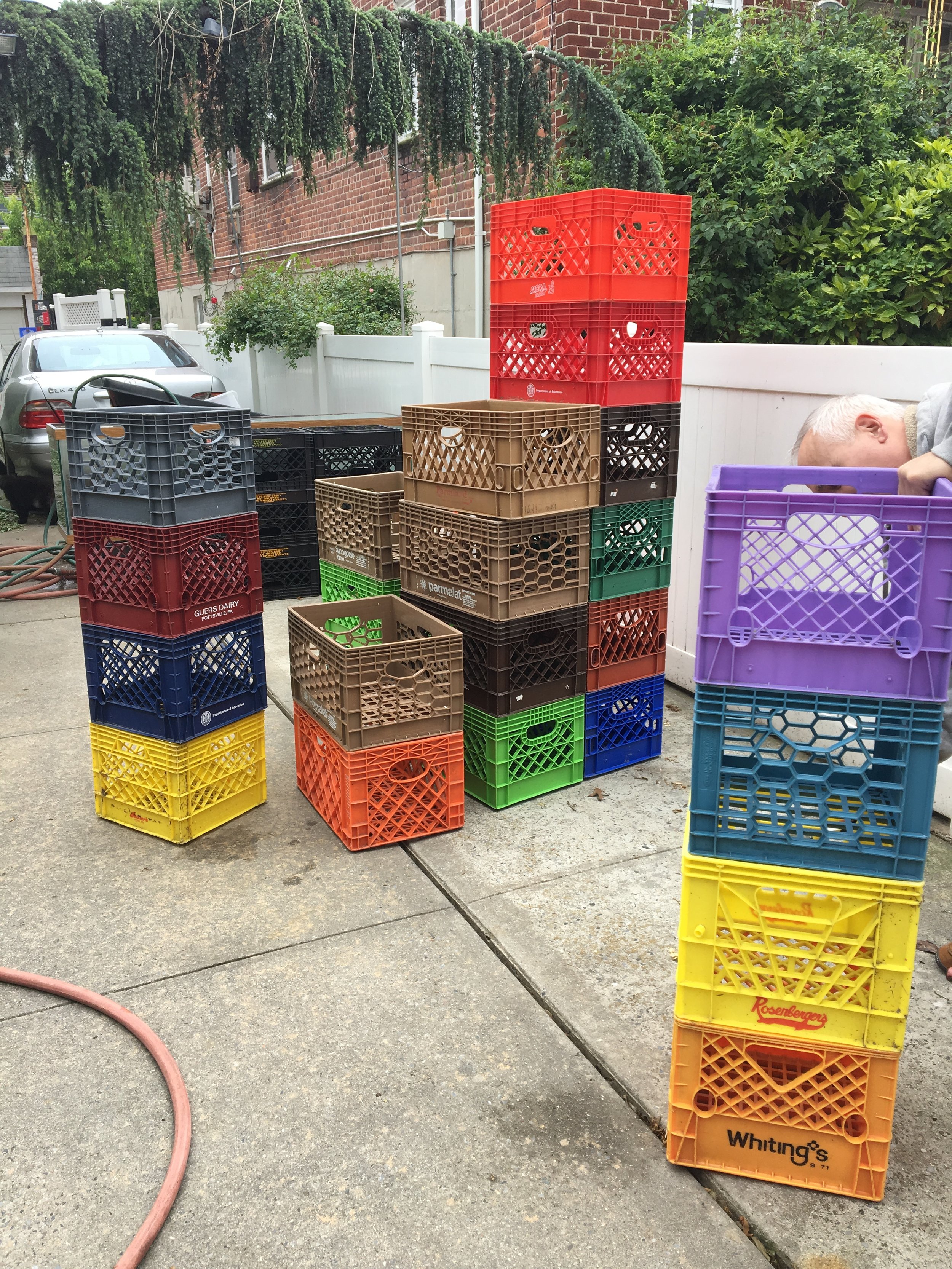There was a quick little moment when Cassie is exploring the Sokolov Estate in Episode 3 “Funeralia” of The Flight Attendant and she comes across a huge taxidermy polar bear in one room. (above)
And then when Cassie and Max have successfully broken into Alex Sokolov’s apartment in Episode 5 “Other People’s Houses” we see a taxidermy polar bear cub in his apartment too—echo-ing the bigger one at his parents home. (below)
As the assistant decorator assigned responsibility for both of these sets (the Sokolov Estate and Alex’s Penthouse Apartment) it was, among other things, my job to find these these taxidermy polar bears.
One thing I learned early on was it was VERY difficult to find a real taxidermy polar bear in the United States for rental or even purchase because IT IS ILLEGAL to trade in taxidermy polar bears.
I found a guy in Canada who had some good looking taxidermy polar bears but then he told me, “I can’t rent it to you across the border in the US because it is illegal to trade in polar bear taxidermy.” Oh. (turns out the Canada-US-Polar Bear triangle is a whole thing)
Hunting Polar Bears has been illegal in the USA since 1973, with exceptions for the indigenous people of Alaska and I talked to one taxidermy specialist in California who told me that it is extremely difficult to find a real Polar Bear taxidermy after the 1940’s and the one they had available to rent was from 1936.
…the problem with that one is it looked like it was from the 1930’s…it was yellowing and a little bit mangy. It didn’t look like a taboo prized possession of some ultra rich people who dealt with dirty money.
In the end we went with one of our familiar taxidermy rental houses in the New York City area who had life size polar bear and polar cub models that weren’t actual taxidermy but very good substitutes that looked great on camera.
For a while, the polar cubs were in our office, though, because even though we had found the scripted polar bear taxidermy pieces, the cubs didn’t come with a stand so we had to build a custom stand for the cub.
View from my desk of Nick our Art PA helping tape out the surface area required to encompass the polar bear cub, with Katie our Set Dec Shopper in the background.
Nick a straight up legit dog whisperer bringing the same love and attention to our polar bear cub model.
Christine Foley (The Flight Attendant’s Awesome Art Director) talking with Katie Citti (one of The Flight Attendant’s Set Designers and Assistant Art Directors) about a design for the stand which Katie drew up for our construction team to build.
And VOILA! A (legal!) polar bear cub that looks like a legit taxidermy polar bear cub on a beautiful custom stand! (see below)
Hard to imagine how much work goes into these little details that appear on screen for a quick second right? I personally think that’s part of the total charm and fun of set decorating world—the crazy weird things you end up learning in your quest to find the right things either in the script or to flesh out a character’s imagined backstory.
You start out focusing on high-end penthouse masculine chic design furniture and then you end up learning all about the Marine Mammal Protection Act of 1972. :)
If you do want to see more photos of the high-end penthouse masculine chic design Jess and I put together for Alex’s Penthouse set (polar bear cub) though, or the classic old money interiors we did for the Sokolov Estate (big polar bear) you can see more photos of the set here.


































